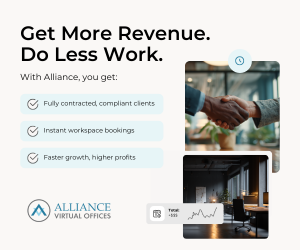With millions of UK workers now working from home, the experiences people have had with this arrangement has permanently altered what we can expect from the future of the workplace.
Now, employees want the ability to work from home when they please, leaving behind their daily stressful commutes.
While some people are viewing this revolution as working in the office versus working from home, the future of the workplace is more nuanced than that.
So what will companies do to accommodate the new needs of their workforce, while also supporting a productive and engaged environment?
First, tenants will be looking to negotiate the terms of their lease agreement as vacancies continue to rise. Doing so not only helps mitigate risks, but can also help in the transition to more flexible work policies that employees want.
It is also up to landlords to find ways to incorporate agility in their buildings. This can be done by investing into amenities and technologies that make the workplace experience seamless, as well as profitable for all parties involved.
Additionally, lease agreements will need to become more transparent about potential exit strategies. Offering short-term leases can help reduce losses and expenses, while still being able to accommodate tenants.
One of the biggest changes that is already underway is increased sanitation protocols and occupancy restrictions. Technology that helps minimize high-touch areas, as well as implementing rules that keep all occupants safe will be essential moving forward.


 Dr. Gleb Tsipursky – The Office Whisperer
Dr. Gleb Tsipursky – The Office Whisperer Nirit Cohen – WorkFutures
Nirit Cohen – WorkFutures Angela Howard – Culture Expert
Angela Howard – Culture Expert Drew Jones – Design & Innovation
Drew Jones – Design & Innovation Jonathan Price – CRE & Flex Expert
Jonathan Price – CRE & Flex Expert












